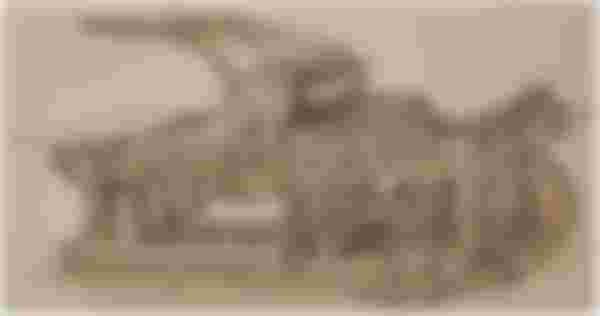Before the invention of printing, the reproduction of books and writings was done by calligraphic copying of books and redrawing of pictures. This work was done at the courts of rulers and nobles, and it was done by tens and hundreds of the most trained copyists. The reproduction of manuscripts existed even before our era. Ancient Greek philosophers state in their works three centuries before the new era that at that time bibliopolis, today's booksellers-publishers, were engaged in copying and selling books in Athens. Transcriptions were made on sheets of papyrus 20 to 25 cm wide and about 40 cm long glued ends together in long strips.
In the old centuries, after the conquest of Alexander the Great, reproduction and trade in transcribed literature was most active in Alexandria, Egypt, and in the time of the Roman Empire, when Rome became the main center of the cultural world, bibliopolis strongly developed reproduction and transcription.
After the collapse of the Roman Empire, there were strong movements and invasions of barbarian peoples, which significantly affected the development and interest in books and literacy, so that the number of Roman bibliopolies fell sharply. At that time, in many provinces of the former Roman Empire, all or part of the power passed into the hands of the monastic clergy. Guided by religious fanaticism and the intention to enable the spread of only Christian church and religious books, they carefully searched for and burned all the remnants of ancient Roman and Greek pagan manuscripts and transcripts. Thus many significant original manuscripts and transcripts of Roman and Greek sages were destroyed.
After a long time, after the described events, the reproductions were mostly limited to church books and prayer books, and they were performed in monasteries. Larger errors were made when transcribing, giving the transcript the opposite meaning from the original. Many church books were transcribed in our monasteries as early as the 11th century, so that this area began to develop significantly in our area.
From the fourth century, after the method of making parchment was found, papyrus was used only for writings of lesser importance, while only parchment was used for more important documents. The beginning of the book's equipment, in its present form, dates from the fifth century. At that time, parchment was already used, and then primitively made paper. The transcribed sheets were numbered and stacked one on top of the other. After finishing the transcript of the book, the set of sheets was sewn at one end, with tape. The leaves sewn in this way were placed in the cover to protect them from creasing. Since the book got its present form, work was done on perfecting the look of the cover by decorating it with various ornaments, which could already be considered a kind of graphic design. Since the tenth century, various jewels have been invested in the engraving of ivory ornaments, precious works, so that only wealthy people had the privilege of having a good book. This custom of furnishing a book lasted until the 19th century, when the Englishman Henry Fischer in Liverpool, by selling books in brochure equipment, lowered the price of the book so much that even the poorest could own it. In the 6th century, the Arabs, while fighting the Mongols, learned the art of making paper and began selling it in Greece and other European countries along the Mediterranean, so that from that time on, less important writings were written on paper instead of papyrus. Prepared liquids in various colors were used to copy the books. The text was written in black, and more important words, sentences or initials in red. Other colors were used to draw ornaments around the initials.
It is known that even in the time of the ancient Babylonians, there was a way of writing a mark, most often a signature on a document, by pressing a stamp on the ring they wore. After the Babylonian seals, many centuries before the new era, in Egypt, Arabia and Persia, it was customary to imprint embossed seals with the manufacturer's mark or initials on unbaked clay products (dishes, bricks, etc.). The Hindus later engraved ornaments on wooden boards, which they then painted with paint and printed on fabric, and decorated their ancient objects. Such procedures could already be considered the forerunners of today's printing. Through trade ties, the art of stamp-making was transferred from Asia Minor first to Greece, and from there to Rome and other Mediterranean countries.
In the old centuries, after the conquest of Alexander the Great, reproduction and trade in transcribed literature was most active in Alexandria, Egypt, and in the time of the Roman Empire, when Rome became the main center of the cultural world, bibliopolis strongly developed reproduction and transcription.

To date, it has not been determined how the mechanical method of copying manuscripts - printing - is known in Europe. It is assumed that the beginnings of printing in Europe date back to the XI century. The work of woodcut printing houses in Europe was first used to reproduce saintly images. Preparation for printing pictures with a wooden cliché was done with woodcarving, and the people who were engaged in that work were called xylographers (woodcuts). The procedure was reduced to removing the wood on the hardwood board with hand tools in places where there should be whiteness on the print, so that the rest of the surface was flat and suitable for leaving a print. The content of the page is engraved so that it looks like a reflection of a real character in a mirror. printing was done in such a way that the prepared cliché would be coated with ink (a roller coated with fine leather) and the paper would be placed so that it would not move, and well-polished, thin leather would be placed over it. The process of printing itself was reduced to carefully rubbing, specially treated bone, the entire surface of the paper over the cliché. This way of printing has proven to be extremely impractical and slow due to the frequent movement of the paper on which it is printed, so that the print is messy and illegible. Further development of this procedure was reduced to the improvement of clichés and the materials from which they are made, so that progress was reflected in the use of copper and similar metals suitable for processing.
The first woodcuts were quite weak, but they were perfected to art with great speed, so that in 1450 to 1460, professional guilds of masters for making clichés and prints were already established. It is difficult to determine, but it is still believed that woodcut printing was brought to the Middle East from China, where a similar method of duplication existed in the 4th century, when it was used to print their first magazines. Later, the procedure was applied to decorate silk, leather and materials intended for decorating temples and apartments.
In 1440, the era of machine duplication of writings and books began. That year, in Strasbourg, Johann Gutenberg invented a hand-held device for pouring individual letters from molten lead and a press for making prints, with which he made incomparably better prints on paper with just one press of a flat plate, instead of the previously unsafe rubbing with bone rubbers. The construction of such a machine required material resources that were not available to Gutenberg, so he searched for a sponsor for a long time, in today's vocabulary. Having collected all the money he could at that time (150 forints), in 1448 he formed his first printing house and working in it, in 1450 he interested the local rich man Johan Fust in his work, who invested 800 forints in the printing house with the right to a mortgage. Then, according to the contract, Gutenberg started printing the Bible.
Due to the excessive volume of work, he suggested that his acquaintance, a carver by profession, Petar Šefer, be called in and help with the work. Working with Gutenberg, Schaefer quickly entered the secrets of the new craft, so that after some time Fust concluded that the printing of the Bible and other newly contracted jobs could take place without Gutenberg, and asked him to return the money he owed. The court transferred the printing house to the new owner on the basis of a mortgage, and Gutenberg lost his job. Shortly afterwards, Fust finished printing the Bible, which was in two books of 324 and 319 pages.
Later, Gutenberg received more modest funds, so he managed to form a new printing house, much smaller than the previous one, but good enough to work in it. He also printed the book Liturgical Psalter in that printing house, the remains of which are in the National Library in Paris. The oldest, so far certainly established, book that Gutenberg printed was Donat. Only a few pages of it have been preserved in the National Library in Paris. The book Scripture with 42 lines per page, printed by the first machine printer Gutenberg, is today considered the most expensive book in the world.
Gutenberg's invention in 1440 established the basic printing methods that preceded today's ones. Despite the fact that Gutenberg, Fust and Schaefer strictly kept the secret of the art of machine reproduction, it is reliably known that as early as 1460 there was a printing house of Johan Mentellin in Strasbourg, and before the destruction of Mainz (Gutenberg's birthplace) and a printing house of Albert Pfister. With the destruction of these printing houses in the frequent political conflicts at the time, the workers who worked in them lost their jobs. Most of them went abroad, where they became real nurseries of printing skills in various European countries.


